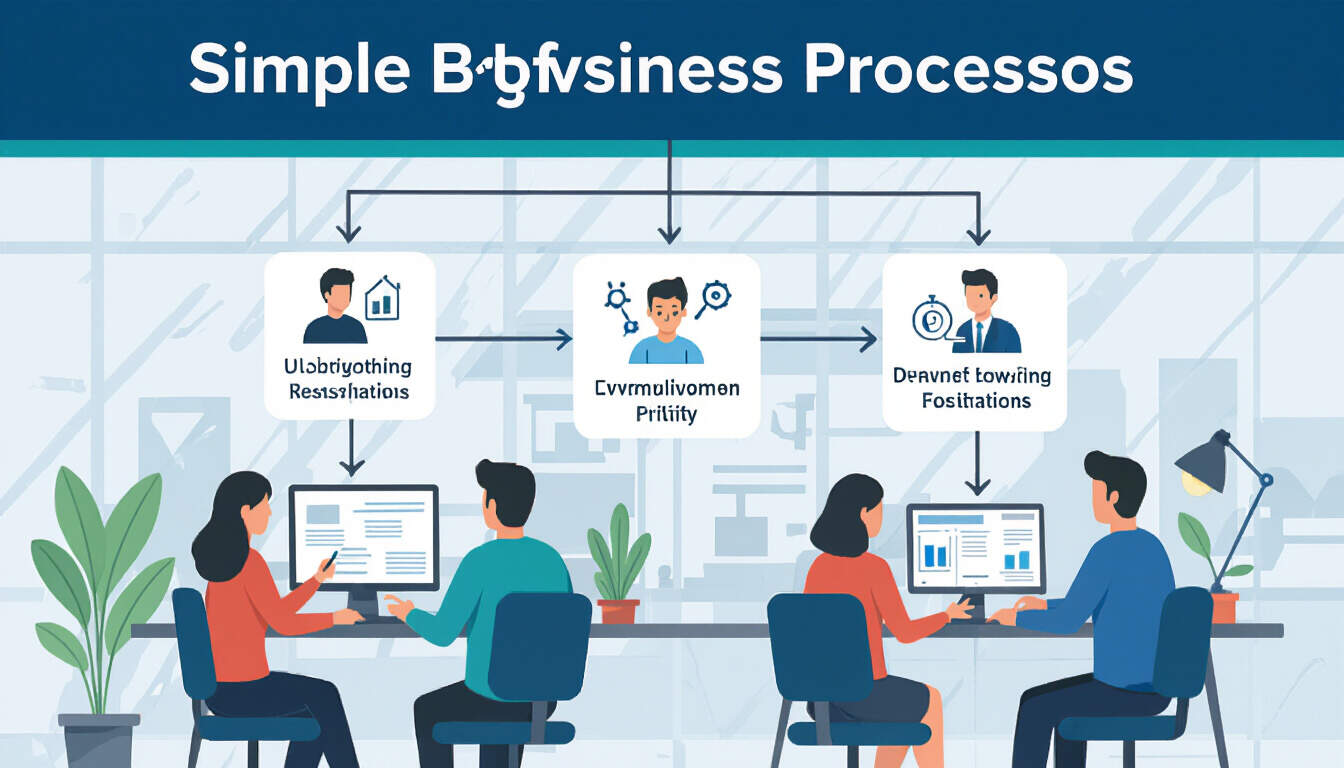Optimizing Revenue Operations with Process Mapping
 by Max Miller
by Max Miller
Operations process mapping streamlines business workflows, enhancing efficiency in revenue operations. By visualizing steps, organizations can identify inefficiencies and integrate automation, leading to better sales performance and cost savings. This approach supports teams in achieving operational excellence.

Operations process mapping serves as a vital tool for businesses aiming to improve their revenue operations. This method involves creating visual representations of workflows, which helps in identifying bottlenecks and areas for enhancement. In revenue operations, such mapping can reveal how sales, marketing, and customer service processes interconnect.
The Role of Process Mapping in Revenue Operations
Process mapping begins with documenting each step in a business operation. For revenue operations, this means outlining the journey from lead generation to deal closure. By doing so, teams can spot redundancies that slow down progress. One key advantage is the ability to standardize procedures across departments.
For instance, in sales operations, process mapping can highlight delays in approval stages. This visualization allows managers to reallocate resources effectively. Another benefit is improved data flow, ensuring that information moves smoothly between systems.
Benefits for Automation
Integrating process mapping with automation tools can transform how businesses operate. Once processes are mapped, automation can take over repetitive tasks, freeing up staff for more strategic work. In revenue operations, this means faster response times to customer inquiries and quicker deal processing.
Automation relies on clear process definitions, which mapping provides. For example, after mapping a lead qualification process, businesses can use software to automatically route leads based on criteria. This not only speeds up operations but also reduces errors. Revenue operations teams often see increased accuracy in forecasting as a result.
Steps to Implement Process Mapping
To start with process mapping, gather a cross-functional team including sales and operations specialists. Begin by selecting a specific process, such as order fulfillment, and list all involved steps. Use simple tools like flowcharts to document the sequence.
Next, analyze the map for inefficiencies. Look for steps that add little value or cause delays. In revenue operations, focusing on customer onboarding processes can yield quick improvements. After analysis, refine the map and test the updated process.
This iterative approach ensures that changes are practical. Many organizations find that mapping helps in training new staff, as it provides a clear guide to workflows.
Real-World Applications
In practice, process mapping has helped various companies streamline their revenue operations. A manufacturing firm, for example, used mapping to reduce the time from quote to invoice. By identifying unnecessary handoffs, they cut processing time by 30 percent.
Similarly, in service industries, mapping sales pipelines has led to better conversion rates. Operations specialists can use these insights to adjust strategies. The key is to regularly update maps as business needs evolve, maintaining relevance.
Challenges and Solutions
While process mapping offers clear benefits, it can face obstacles like resistance from teams accustomed to old methods. To overcome this, involve employees early in the mapping process to gain buy-in. Provide training on new tools and encourage feedback.
In revenue operations, ensuring that maps align with overall business goals is crucial. Use metrics such as cycle time and error rates to measure success. Over time, these efforts lead to a more agile operation.
Integrating with Technology
Technology plays a significant role in modern process mapping. Software solutions allow for digital mapping, making it easier to share and update processes. For revenue operations, integrating with CRM systems can automate data entry and reporting.
This combination enhances overall efficiency. Teams can focus on high-value activities like building client relationships. Automation in these systems ensures that once a process is mapped, it runs smoothly without constant oversight.
Future Trends
As businesses grow, the need for efficient processes becomes more pressing. Emerging tools offer advanced mapping features, such as real-time collaboration. In revenue operations, this means quicker adaptations to market changes.
Looking ahead, more integration between mapping and AI-driven automation is expected. This will further optimize workflows and support data-driven decisions.
In summary, operations process mapping is essential for enhancing revenue operations. By visualizing and refining processes, businesses can achieve greater efficiency and integrate automation effectively. This leads to improved performance and sustained growth for sales and operations teams.
